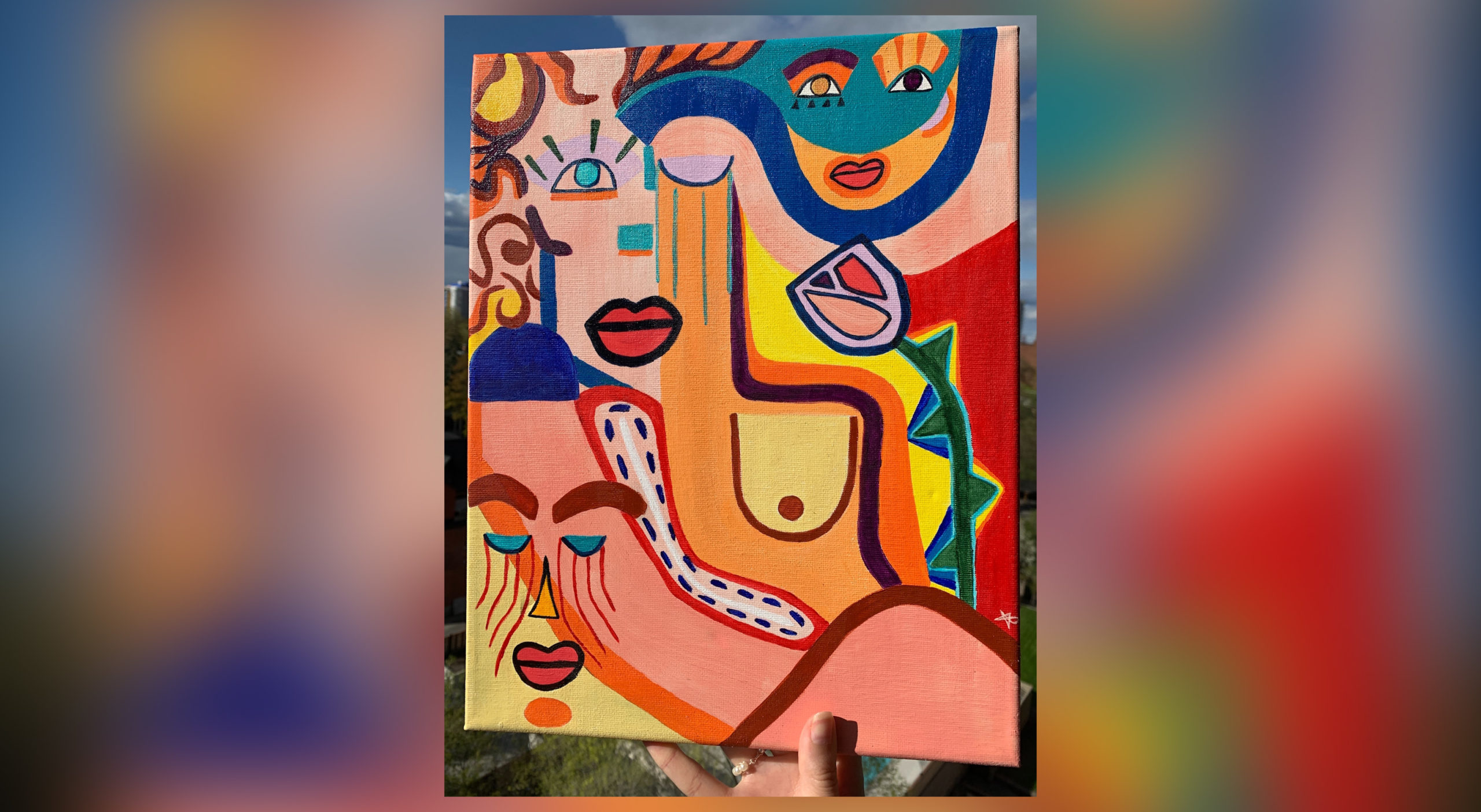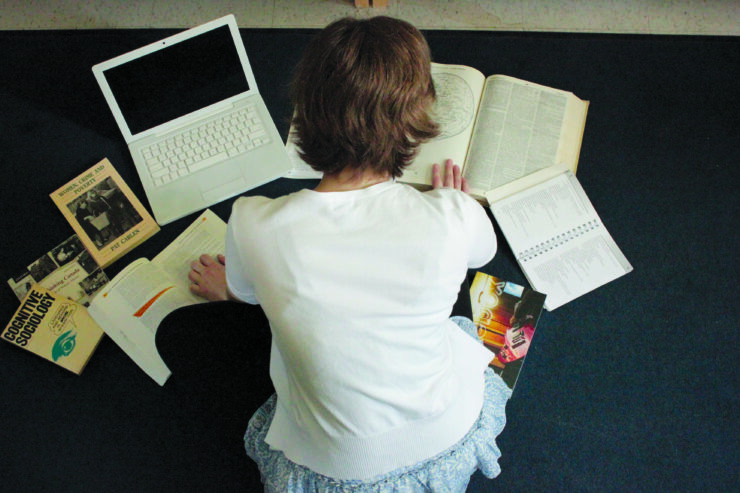Finding the spontaneity in feminist painting
In her first abstract piece, University of Ottawa artist Angelica Pileci captured viewers’ minds with her use of bright colours and bold brushstrokes. Now in her final year of studying education at the U of O, Pileci maintains that although she has never taken up art in a formal way, it has been a constant in her life.
“I’ve always been into art,” said Pileci in conversation with the Fulcrum. “I’ve been interested in it for my whole life.”
Pileci’s art centres around ideas of womanhood, feminism, and social justice, drawing on inspiration from artists like Banksy and Morgan Gray.
Her latest piece represents a new beginning for Pileci as she moves away from a precise and planned style to a more spontaneous one.
“I would always plan my other artworks, with this one I just went with the flow,” explained Pileci. “I worked on it for eight months, adding more as I went.”
This new style and method serve Pileci well: her final product demands to be seen, drawing the viewer in to look for meaning.
When asked what she hopes viewers will feel when looking at her piece, Pileci said that when sharing this piece on her Instagram she “wanted to hear other people’s interpretation and asked them to comment what they thought.”
The range of responses on her Instagram reflects Pileci’s goal for the viewer to have a personal experience with her artwork. Pileci shared some of these responses with the Fulcrum.
To one viewer the piece represented “the many stages of womanhood — womb, to woman, to rose.” To another viewer, the piece “blends three characters harmoniously and the blue represents the fluidity of their unity.”
Pileci’s piece creates room for the viewer, each colour leaves space for a new interpretation. And this space is something Pileci wishes to create more of, as she continues on this new spontaneous path, moving away from perfection in her work and towards making, what she explains as, “work that evokes a response from people.”
The artwork now resides in Pileci’s friend Tatiana Haustant’s home, where it serves as a constant space for reflection.
“The warm colours give you the feeling of warmth, a motherly hug I’d say or you holding your inner child and letting her know that she can be herself and that you’ll love her no matter what. The colder colours are a reminder to protect yourself from people that can drain the warmth you are feeling, be kind to everyone but careful.”
The piece is impactful and allows Pileci’s goal to shine through — every encounter with it is personal and one worth remembering.





